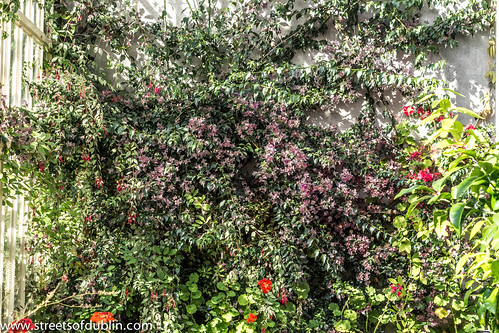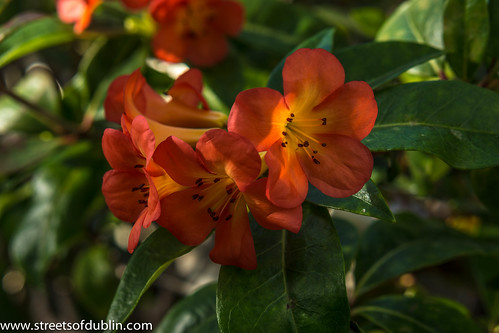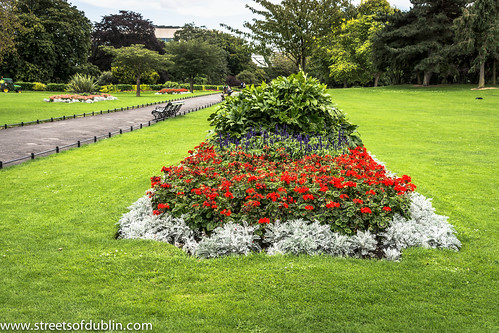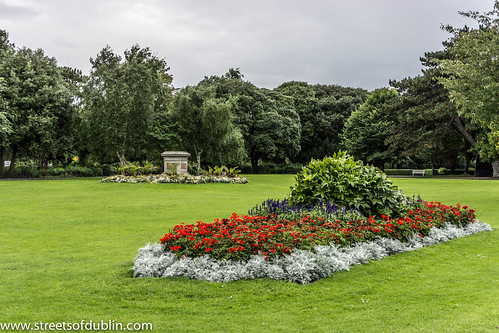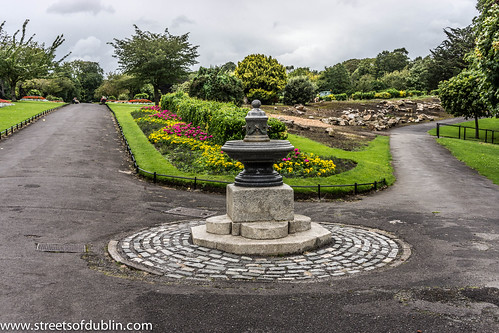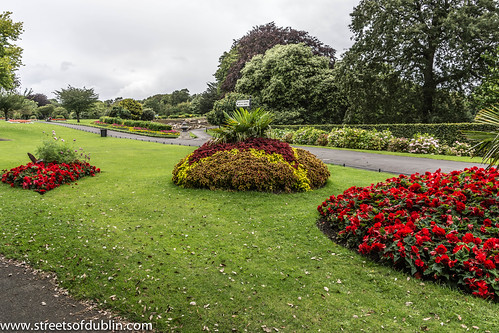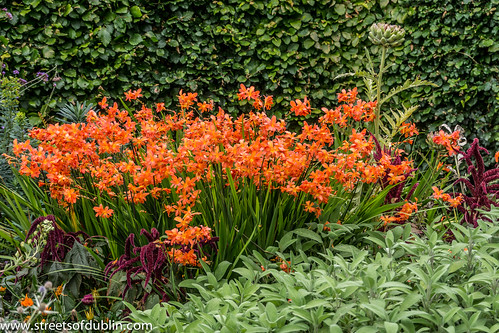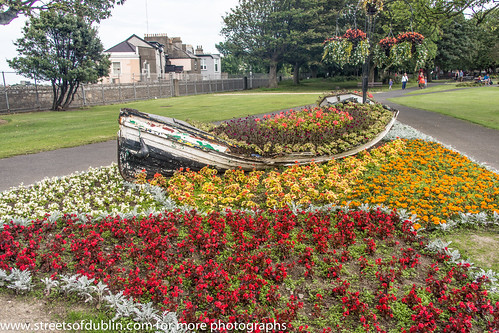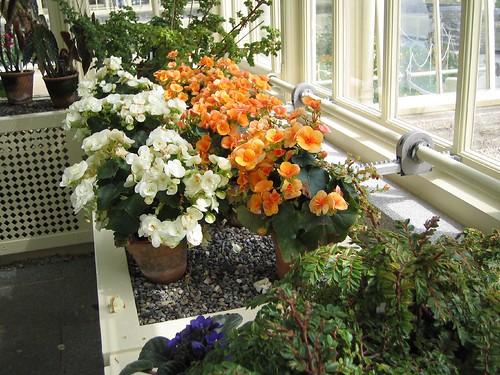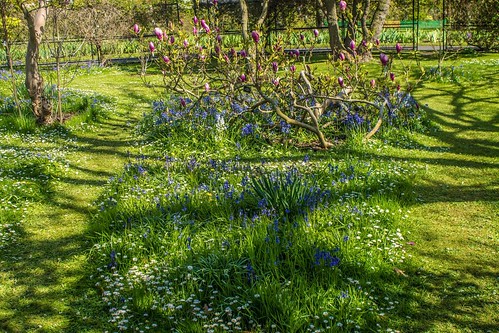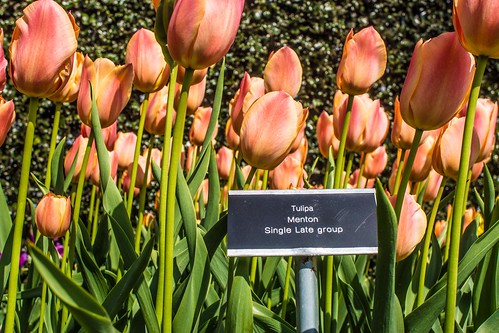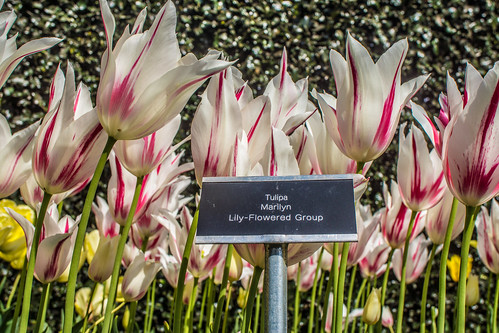Thursday, September 13, 2012
Sunday, September 2, 2012
Phoenix Park - Dublin (Ireland)
People's Gardens
The Gardens, located close to the Parkgate Street entrance, comprise an area of 9 hectares (22 acres), and were re-opened in 1864. These gardens were initially established in 1840 as the Promenade Grounds. They display Victorian horticulture, including ornamental lakes, children's playground, picnic area and bedding schemes. A statue is in the gardens dedicated to executed Easter Rising leader Seán Heuston. There is a plaque in honour of the Irish sculptor Jerome Connor on Infirmary Road, overlooking the Garden's which he frequently visited. The opening hours are 8am till dusk. Closing times vary during the year.
Phoenix Park - Dublin (Ireland)
People's Gardens
The Gardens, located close to the Parkgate Street entrance, comprise an area of 9 hectares (22 acres), and were re-opened in 1864. These gardens were initially established in 1840 as the Promenade Grounds. They display Victorian horticulture, including ornamental lakes, children's playground, picnic area and bedding schemes. A statue is in the gardens dedicated to executed Easter Rising leader Seán Heuston. There is a plaque in honour of the Irish sculptor Jerome Connor on Infirmary Road, overlooking the Garden's which he frequently visited. The opening hours are 8am till dusk. Closing times vary during the year.
Phoenix Park - Dublin (Ireland)
People's Gardens
The Gardens, located close to the Parkgate Street entrance, comprise an area of 9 hectares (22 acres), and were re-opened in 1864. These gardens were initially established in 1840 as the Promenade Grounds. They display Victorian horticulture, including ornamental lakes, children's playground, picnic area and bedding schemes. A statue is in the gardens dedicated to executed Easter Rising leader Seán Heuston. There is a plaque in honour of the Irish sculptor Jerome Connor on Infirmary Road, overlooking the Garden's which he frequently visited. The opening hours are 8am till dusk. Closing times vary during the year.
Tuesday, July 24, 2012
Thursday, April 26, 2012
National Botanic Gardens (Dublin)
National Botanic Gardens (Dublin)
These colourful gardens cover a total area of 19.5 hectares, part of which is the natural flood plain of the river Tolka. The gardens contain a large plant collection which includes approximately 20,000 species and cultivars. There are four ranges of glasshouses including the recently restored Curvilinear Range. Notable features include herbaceous displays, rose garden, rockery, vegetable garden, arboretum, extensive shrub borders and wall plants. Gardens are accessible for people with disabilities but there are some steep gradients.
The new Education & Visitor Centre, due to open in September 2000, is fully accessible for people with disabilities.
Saturday, April 21, 2012
Botanic Gardens - Dublin
Via Flickr:
Visit Botanic Gardens Photo Gallery
The National Botanic Gardens are located in Glasnevin, 5 km north-west of Dublin city centre. The 19.5 hectares are situated between Prospect Cemetery and the River Tolka where it forms part of that river's floodplain.
The gardens were founded in 1795 by the Dublin Society (later the Royal Dublin Society) and they have grown to hold 20,000 living plants and many millions of dried plant specimens. There are several architecturally notable greenhouses.
Botanic Gardens - Dublin
Via Flickr:
Visit Botanic Gardens Photo Gallery
The National Botanic Gardens are located in Glasnevin, 5 km north-west of Dublin city centre. The 19.5 hectares are situated between Prospect Cemetery and the River Tolka where it forms part of that river's floodplain.
The gardens were founded in 1795 by the Dublin Society (later the Royal Dublin Society) and they have grown to hold 20,000 living plants and many millions of dried plant specimens. There are several architecturally notable greenhouses.
Botanic Gardens - Dublin
Via Flickr:
Visit Botanic Gardens Photo Gallery
The National Botanic Gardens are located in Glasnevin, 5 km north-west of Dublin city centre. The 19.5 hectares are situated between Prospect Cemetery and the River Tolka where it forms part of that river's floodplain.
The gardens were founded in 1795 by the Dublin Society (later the Royal Dublin Society) and they have grown to hold 20,000 living plants and many millions of dried plant specimens. There are several architecturally notable greenhouses.
Botanic Gardens - Dublin
Via Flickr:
Visit Botanic Gardens Photo Gallery
The National Botanic Gardens are located in Glasnevin, 5 km north-west of Dublin city centre. The 19.5 hectares are situated between Prospect Cemetery and the River Tolka where it forms part of that river's floodplain.
The gardens were founded in 1795 by the Dublin Society (later the Royal Dublin Society) and they have grown to hold 20,000 living plants and many millions of dried plant specimens. There are several architecturally notable greenhouses.
Botanic Gardens - Dublin
Via Flickr:
Visit Botanic Gardens Photo Gallery
The National Botanic Gardens are located in Glasnevin, 5 km north-west of Dublin city centre. The 19.5 hectares are situated between Prospect Cemetery and the River Tolka where it forms part of that river's floodplain.
The gardens were founded in 1795 by the Dublin Society (later the Royal Dublin Society) and they have grown to hold 20,000 living plants and many millions of dried plant specimens. There are several architecturally notable greenhouses.

